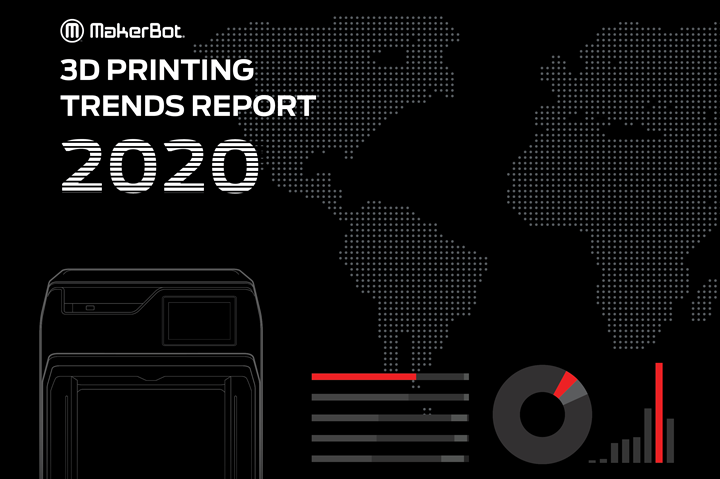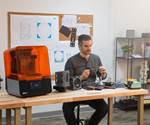New Report Says 74% of Companies Plan to Invest in 3D Printing in 2021
Over half of survey respondents plan to invest up to $100,000 in 3D printing technologies next year.
A new report from MakerBot, a subsidiary of Stratasys, says that nearly three-quarters (74%) of respondents are planning to invest in 3D printing technology in 2021, with 50% planning to spend up to $100,000.
The report includes over 1,200 responses from professionals across multiple industries, including aerospace, industrial goods, military & defense, medical, and automotive.
“These findings confirm what we have known for some time – and that is the potential of 3D printing to transform “óĻó“«Ć½ operations,” said Nadav Goshen, CEO of MakerBot. “When faced with the kind of challenges that “óĻó“«Ć½es have had to contend with over the last 12 months, it is not unusual to see them cut all but the most critical capital expenditure. However, this is clearly not the case with 3D printing. While COVID-19 impacted the “óĻó“«Ć½ operations of nearly 70% of the respondents, 56% said that it did not impact their investment plans in 3D printing. In fact, when respondents were asked what their investment plans were for next year, 74% stated that they still had plans to invest in 3D printing. This is an incredibly positive response which, we believe, signals growing confidence in 3D printing’s ability to improve resilience, responsiveness and, ultimately, the profitability of “óĻó“«Ć½ operations.”
Other key findings of the include:
- Customization is the number one reason respondents use 3D printing. Respondents wanted the ability to create custom, low-to-mid-volume production parts (68%) and print complex geometries (57%).
- However, 3D printing continues to play a much bigger role in the research and design phases. Concept modeling (70%), functional prototypes (66%), and research and development (44%) were the main applications for respondents.
- Print quality and printer performance are top factors when choosing a 3D printer. A printer is only as good as its 3D-printed parts. Respondents stated that dimensional accuracy (61%) and reliability (65%) are the top factors influencing their printer selections.
- FDM most used. While there are a variety of 3D printing technologies, FDM remains the most frequently used. The majority of respondents (77%) use FDM/FFF 3D printers in their repertoire, while 27% use SLA technology. Unsurprisingly, plastics (93%) and resins (25%) were the main materials used.
- Costs and technical expertise are major barriers to implementing 3D printing. 53% of respondents say that lack of budget is preventing them from fully utilizing 3D printing, while 29% cite lack of technical expertise.
- Respondents expect the technology, materials, and applications to develop over the next 3-5 years. 61% of respondents expect more materials to emerge, while 58% expect the cost of using the technology to decrease.

Findings from inaugural report signal mounting confidence in 3D printing’s ability to transform “óĻó“«Ć½ operations.
Related Content
-
Additive Fusion Technology Optimizes Composite Structures for Demanding Applications
9T Labs continues to enhance the efficiency of its technology, which produces composite parts with intentionally oriented fibers.
-
Smooth Operators: Vibration Compensation Improves Robot Performance
Ulendo is working to apply its vibration compensation algorithm to robots. This application is more complex than its initial market of fused filament fabrication 3D printers, but could result in faster, cheaper robots.
-
The Connector Conundrum: 3D Printed Mold Tooling’s Role in Innovation
ReelView Fishing faced an electronics obstacle in the development of its new technology for underwater video. Additive manufacturing for moldmaking allowed for the speed necessary to iterate to a solution. How inventors and invention will benefit from new ways of obtaining production-ready tooling.




